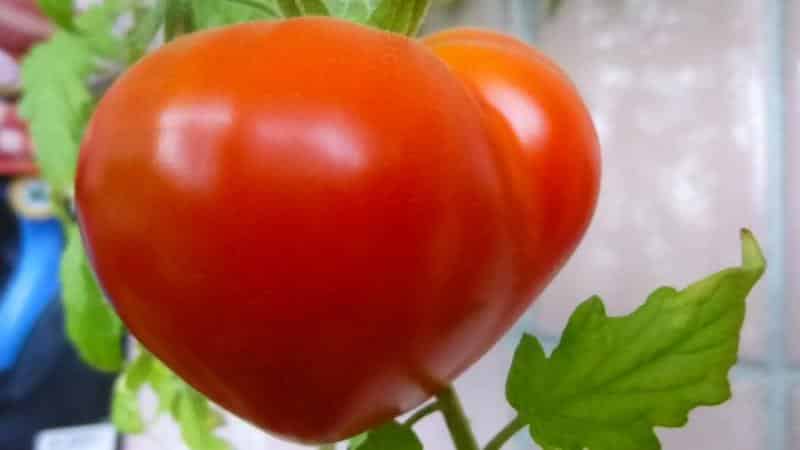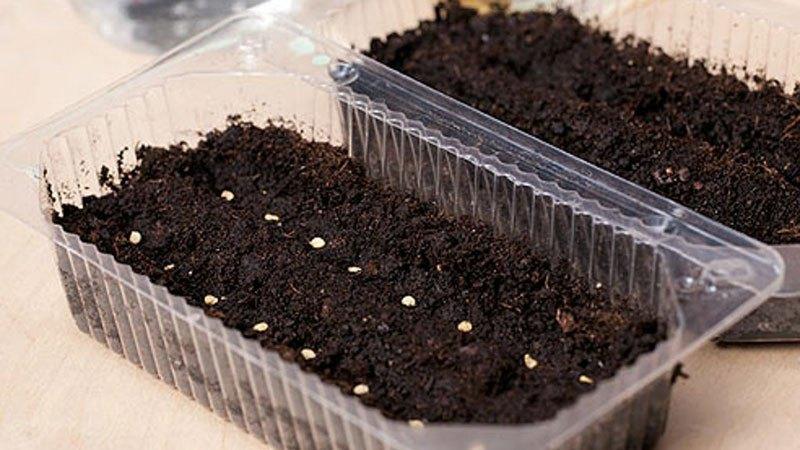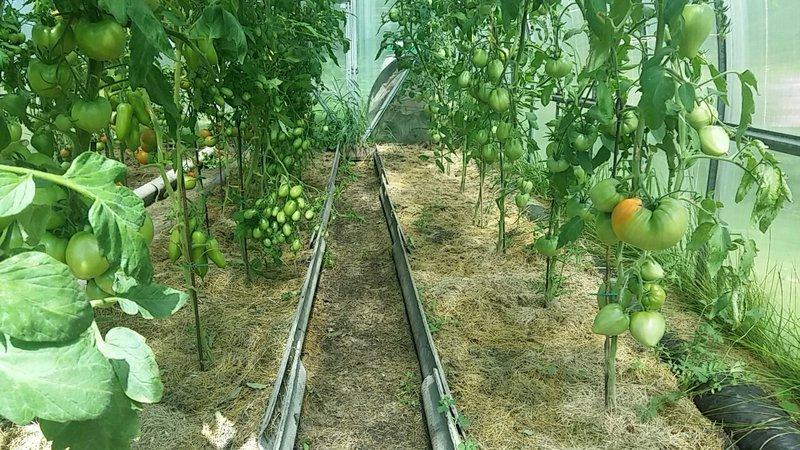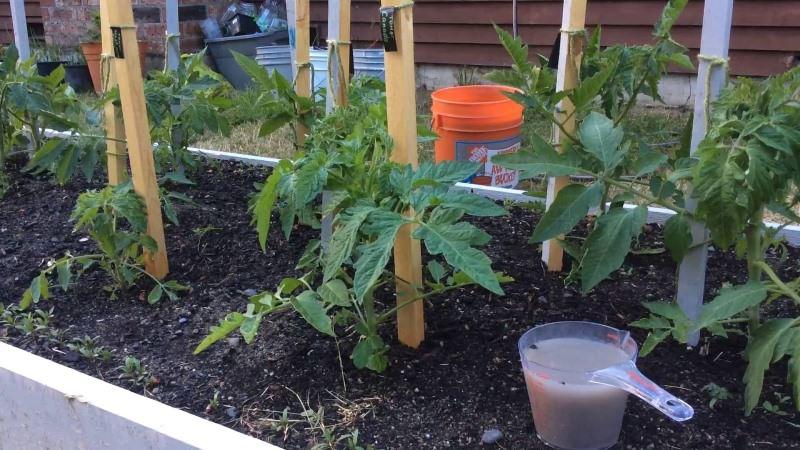The Budenovka tomato, which produces a bountiful harvest of delicious tomatoes, can be grown independently on the plot or in a greenhouse
The agricultural sector does not stand still. New varieties and hybrids of vegetable crops are appearing abroad and in Russia. Breeders strive to achieve the best properties and diversify vegetable crops as much as possible so that gardeners experiment and enjoy the diversity of the crop.
Budenovka tomatoes have long been widely known in gardening circles. These are hybrid tomatoes. Hybrid is an organism or cell that was obtained by crossing genetically different forms to obtain new properties. Budenovka tomatoes have high agrotechnical and taste qualities. Let's look at them in detail.
Description and characteristics of the variety
The Budenovka variety belongs to tall tomatoes, the stem reaches a height of 3-4 meters, the growth of the plant does not stop for a long time, so the bushes are pinched. The stems are long and thin and require garters and support. Few leaves are formed; they have a dark green color and a rough surface characteristic of tomatoes.
The Budenovka variety is an early ripening variety; the fruits ripen 110 days after planting the seeds. The yield from 1 tomato bush is approximately 5-7 kg.
Budenovka tomatoes grow both in greenhouses and in open ground. The variety is unpretentious, gives a good harvest even in rainy summers, and is resistant to diseases.
Fruit characteristics
The ripe fruits of Budenovka tomatoes are red or pink with a scarlet tint, their shape resembles the Red Army headdress Budenovka, hence the name of the hybrid.
The tomatoes grow large (300 g), have a dense peel, thanks to which they do not crack and are stored for a long time. The pulp is sweet, juicy, with a slight sourness.
Thanks to their pleasant taste and dense pulp, Budenovka tomatoes are suitable for fresh consumption and for preparing and pickling.
The photo below shows the Budenovka tomato.

How to grow seedlings
Let's study in detail the rules for growing seedlings.
Seed preparation
Gardeners buy seeds for planting in a specialized store or grow them themselves.
In the second case, at the end of the season, remove the largest and most ripe fruit from the bush, separate the pulp with seeds and place it in a glass container with water. Place the container in a warm place. When the seeds float to the surface after a week, place them on a clean napkin and dry. Place the seeds for storage in an airtight glass container.
Sowing seeds for seedlings
Sowing of Budenovka tomato seeds for seedlings is carried out in March-April, depending on local climatic conditions.
Before sowing seeds, preparatory treatment is carried out. Gardeners resort to this trick to check seeds for quality: they pour the seeds into a 1.5 percent solution of table salt, while high-quality seeds will settle to the bottom.
Next, the seeds are placed in a weak potassium permanganate solution for disinfection. Then it is recommended to keep the seeds in the growth stimulator for some time (according to the instructions on the stimulator packaging).
The photo below shows an option for planting seeds in a plastic container.

Container and soil
Take wooden boxes or plastic containers and fill them with soil. To save time and get better results, use ready-made soil, it is sold in a specialized store. It is recommended to place sand and pebbles at the bottom of the box as drainage.
Sowing
The seeds are placed in the soil to a depth of 0.5-1.5 cm, the distance between the seeds is 15 mm. If the seedlings sprout close to each other, they are transplanted into separate containers.
Growing seedlings
After sowing, the boxes are covered with film and placed in a warm place. When the seedlings sprout, the film is removed.
Important. It is recommended to remove the film from the boxes gradually, first for a short time, then for good, so that the seedlings are hardened before planting in a permanent place.
During seedling growth, complex fertilizers (Agricola, Fertika, Lux) are applied to the soil every 2 weeks. The seedlings are not watered, but irrigated with a spray bottle. For irrigation, use warm water; it is recommended to spray once a week.
Seedlings are grown in a sunny, warm place, for example, on a windowsill. When the first brushes appear on the bushes, the seedlings are planted. However, it is worth focusing on the weather: make sure that it is warm and the temperature will not drop below +10 degrees.
How to grow tomatoes
So, the time has come to plant plants in open ground or a greenhouse. Follow the recommendations below to get a good harvest
Landing
When planting seedlings in a permanent place, it is important to do this on time so that the plants do not die or get sick.
Seedlings are planted in open ground only when there are no frosts at night, the time depends on the region and climate, for example, in the southern regions of the country, seedlings are planted already in April.
The soil for tomatoes is prepared in spring. The planting area is dug up along with humus or compost. Gardeners advise planting the Budenovka variety where zucchini, parsley, and carrots previously grew, since the soil after these crops is fertile. Such plants are called green manure; they provide crop rotation for tomatoes and allow you not to change the place for planting tomatoes every year.
Note. Green manures are plants that are planted in areas of the garden that will later be planted with another crop. Green manure produces dense greenery, which is dug into the soil. Greens saturate the soil in the selected area with nitrogen and humus, reduce the growth of weeds, and prevent the spread of diseases.
Green manure greens are used as mulch. Mulch is plant organic matter: stems, leaves of plants, which are laid on the soil to enrich it with humus. The mulch cover provides the soil layer with the necessary supply of beneficial microorganisms. In the process of decomposition of such a layer, the mineralization of nutrients accelerates and the efficiency of their absorption by plants increases.
In the selected area or in the greenhouse, the soil is dug up, loosened, holes are made, in each of which compost and ash are placed. The holes are dug at a distance of 30 cm from each other. There is a gap of 50 cm between the rows.
Pour water into each hole. Once the water has been absorbed, place a seedling in each hole. The bush should be lowered to the first leaves, sprinkle soil on top. It is recommended to put straw on the soil, which will retain moisture around the bush.
Stick a peg near each bush and tie the plant to it as it grows.
Care
The Budenovka variety is unpretentious in care. Watering the tomatoes should be 2 times a week, at the root. Feed with fertilizers - once every two weeks. After transplantation, fertilizers containing nitrogen, phosphorus, and potassium are used not for seedlings, but for tomatoes. It is better to use ready-made fertilizer mixtures.
It is recommended to form Budenovka bushes into one stem, so the fruits will be larger. In early August, the plant is pinched so that the bush stops growing upward and forms more fruit-bearing branches. As the bushes grow, remove the lower leaves to improve photosynthesis. For the Budenovka variety, pinching is required, that is, removing shoots from the leaf axils. Gardeners recommend trimming the lateral roots so that the root system develops better.
Gardeners also recommend lightly tapping the tomato stem during flowering, thereby aiding pollination. Flowers that didn't arrive form an ovary at the end of the flowering season, it is better to remove.
Features of cultivation and possible difficulties
As mentioned above, the Budenovka variety is unpretentious in care; the only difficulties that the gardener faces are the preservation of the stems. The stems of the variety are long and thin and easily break under the weight of the fruit. To avoid this, it is recommended to carefully tie the bush to supports and promptly remove unnecessary parts.
Diseases and pests
The Budenovsky variety is resistant to pests and has good immunity to major tomato diseases. However, for prevention, it is recommended to spray the bushes with a solution of garlic juice several times a season.
Note. To combat insects such as mole crickets, wireworms, and caterpillars, it is recommended to use special chemicals: “Grom”, “Match”, “Promark” and others.
The nuances of growing in open ground and in a greenhouse
Planting seeds and growing seedlings for the ground and for a greenhouse are no different. When choosing a place to grow tomatoes, take into account the climatic characteristics of the region and the condition of the soil for planting.
Under landing conditions on open ground It is easier to maintain correct crop rotation; it is enough to plant tomatoes in the area where cucumbers, zucchini, carrots or dill previously grew.
In a greenhouse with crop rotation, things are more complicated. Gardeners give the following recommendations:
- Prepare the soil based on garden soil, peat, manure, sawdust (ratio 2:1:1:1), water with a solution of potassium permanganate for disinfection.
- Remove the top layer of soil (20 cm) from the greenhouse. fill in the prepared soil instead of the removed soil.
- Two months before planting tomatoes, sow early-ripening green manure crops, such as mustard and legumes, into the greenhouse. Before planting tomatoes, dig them up along with the soil.
The photo below shows tomatoes in a greenhouse and in open ground.


Harvesting and application
The Budenovka variety is productive in terms of yield. Gardeners collect 6-9 kg of fruits from one bush. The peel of tomatoes is dense, so tomatoes are well stored and ripen when removed.
The variety is suitable for industrial cultivation; the fruits tolerate transportation well over long distances. Tomatoes are suitable for preparing salads, soups, sauces and eating fresh.
Advantages and disadvantages of the variety
Let us highlight the following advantages of the variety:
- The fruits are large, tasty, universal in use, and the fruit yield is high.
- The bushes do not require special care; agricultural technology is standard for tomatoes.
- The variety is resistant to pests and diseases.
- Tomatoes are versatile, growing well both in greenhouses and in open ground.
- The plants are unpretentious and do not require labor-intensive processing or a lot of time.
Disadvantages include stem fragility and severe branching, but with proper staking and pinching, this problem can be easily solved.
Reviews
The Budenovka variety has almost no negative reviews. Summer residents speak of it as a universal variety that combines a lot of positive characteristics.
Ivanova Ekaterina, 55 years old, Astrakhan
“This year, on the advice of a neighbor, I planted Budenovka for the first time. The tomatoes were a pleasant surprise, there was little hassle, but the harvest was large, I really liked the taste. So far I’ve only planted small plots as a test, next year I’ll plant larger plots.”
Sakharov Konstantin, 67 years old, Volgograd
“I’ve been planting this variety since the very beginning of gardening; I’ve always been attracted by its unpretentiousness. The harvest has never failed. The whole family loves these tomatoes and we eat them with pleasure. The only thing is that the stems are very thin and brittle, you need to tie them up carefully, this takes time. But the result is worth it."
Karavaeva Valentina, 63 years old, Krasnodar region
“We have been growing this particular variety in the garden for many years because we are very happy with it. We advise you to try it, you will like the taste and not much hassle. We salt and preserve small tomatoes, and eat large ones fresh or make adjika.”
Conclusion
It’s not for nothing that the Budenovka tomato variety is so popular, and its seeds are shared among summer residents. It fully corresponds to its description and reviews from gardeners. This is a recognized, time-tested variety. It grows almost on its own and does not require much time or effort. The yield is consistently high and the tomatoes are tasty. You can safely rely on this variety.